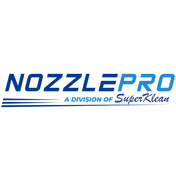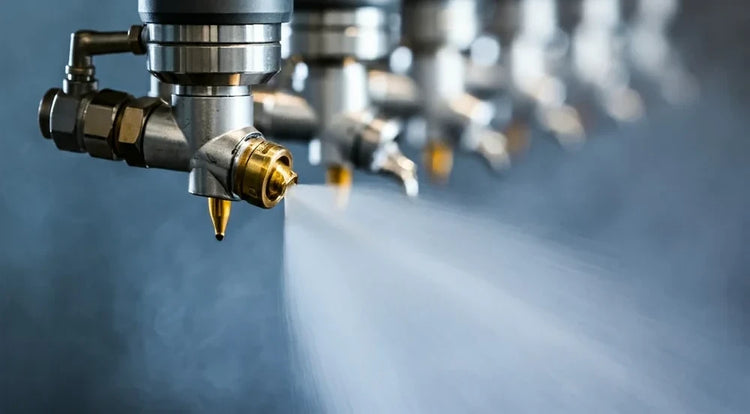Wheel Cleaning Nozzles
Wheels often accumulate tough contamination like brake dust, tar, road film, and grime in tight lug nut pockets. Using the right spray nozzles makes a big difference in cleaning performance, chemical efficiency, and customer satisfaction.

Why Quality Wheel Cleaning Nozzles Matter
-
Focused, high-impact spray is needed to break up and remove baked-on brake dust and grime.
-
Repeatable performance ensures consistent cleaning through the wheel, spokes, and inner barrel with every pass.
-
Nozzle longevity matters — abrasive brake dust and chemicals can wear down cheap tips.
-
Maintenance ease — quick-disconnect or swivel heads speed service and minimize downtime.
Recommended Nozzle Types & Application Tips
-
Rotating Turbo Jet / Rotary Barrel Nozzles — Rotating jets create mechanical agitation to blast out grime from tight spaces. Ideal for automatic rollovers or self-serve wand stations.
-
Adjustable Pencil Jets — Use narrow solid or pencil jets (e.g. 0.25 mm to 0.5 mm) for customizing jet size and flow.
-
Cluster / Multi-Jet Nozzles — Multi-jet patterns help reach all spoke faces and lug nut pockets effectively.
-
Full-Cone Nozzles — For larger wheels or deep rims, full-cone spray can reach further into the wheel barrel.
Material Guidance: Use stainless steel or abrasion-resistant polymer tips; Viton or EPDM seals are preferred for chemical compatibility.
Sizing & Installation Tips
-
Determine Required Impact & Coverage
-
Wheel cleaning often requires medium-to-high pressure (100–400 PSI / ~7–28 bar) depending on the cleaning chemistry and buildup severity.
-
Choose orifice sizes that deliver the needed GPM while maintaining jet velocity.
-
-
Jet Alignment & Swivel Fittings
-
Use swivel joints or adjustable nozzles to target difficult angles inside the wheel.
-
Position nozzle(s) to sweep around rim spokes while minimizing overspray onto other surfaces.
-
-
Spacing & Phase Use
-
Aggressive cleaning may use dual nozzle banks sweeping inward/outward.
-
Consider a second pass with lower-impact rinse jets to flush away loosened dirt without damaging surfaces.
-
-
Filter & Strainer Use
-
Inline 60–100 mesh strainers help prevent clogging from debris.
-
If wheels are heavily corroded or loaded with abrasive dust, consider coarser pre-filters.
-
Best Practices & Maintenance
-
Check Spray Pattern Monthly to detect drift or misalignment.
-
Use Quick Release Nozzles for fast maintenance and tip changes.
-
Inspect Tip Wear Quarterly — worn nozzles can reduce jet velocity and degrade cleaning performance.
-
Chemical Compatibility — ensure seals and materials used can tolerate acidic wheel cleaners or degreasers.
Common Issues & Solutions
| Issue / Symptom | Likely Cause | Recommended Fix |
|---|---|---|
| Poor wheel cleaning | Low nozzle velocity or poor alignment | Increase pressure, use narrower jet, or reposition nozzle |
| Clogged nozzle / weak jet | Abrasive brake dust or grit | Add strainers, flush lines after use |
| Overspray onto paint/trims | Jet alignment or incorrect nozzle spacing | Use shielded nozzles or reduce orifice size |
| Tip wear/erosion | Abrasive chemicals or particles | Use more durable materials; replace worn tips |
Suggested NozzlePro Products for Wheel Cleaning
-
Rotating Turbo Jet Wheelspray Nozzles
-
Adjustable Pencil Jet Nozzles (0.25–0.5 mm)
-
Multi-Jet Cluster Nozzles
-
Stainless-Steel or Chemical-Resistant Polymer Tips
-
Inline Mesh Strainers & Swivel Connectors
(Contact our nozzle experts with your pump specs and desired GPM/PSI range for custom recommendations.)

